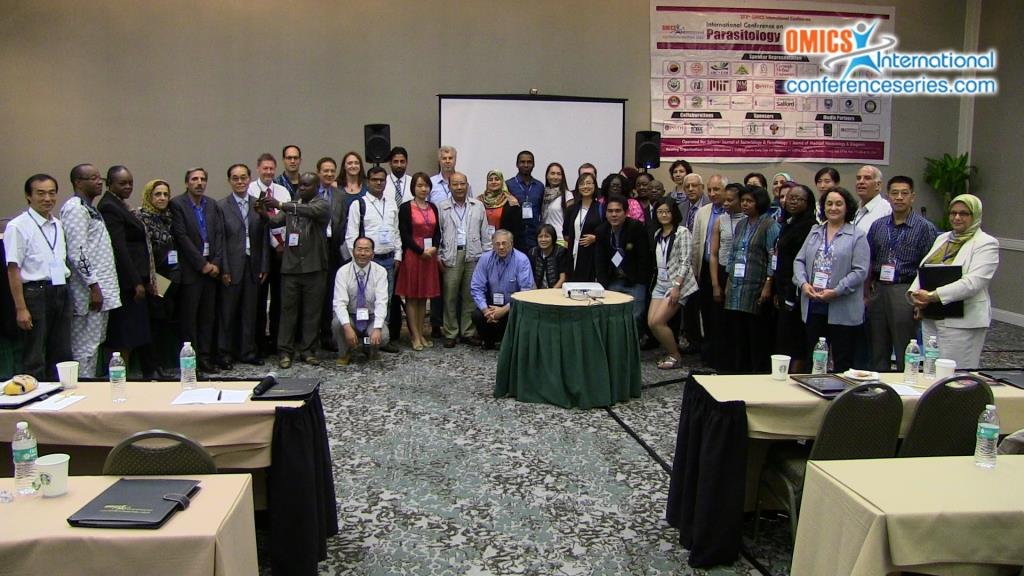
Ahmet Özer
Sinop University, Turkey
Title: Assessment of endemic toothcarp (aphanius danfordii) and invasive mosquitofish (gambusia holbrooki) health by means of relative condition factor under the co-infection of different parasite groups and revelation of the effects on their competitive interactions
Biography
Biography: Ahmet Özer
Abstract
The objectives of the present study were to investigate the parasite fauna of endemic toothcarp Aphanius danfordii (Boulenger, 1890) and invasive mosquitofish Gambusia holbrooki Girard, 1859 sharing the same ecological environment, to assess the effects of different parasite group’s co-infections on the relative condition factor of both fish species and to reveal the effects on their competitive interactions. Totally 125 Aphanius danfordii and 227 Gambusia holbrooki were collected by means of electro-fishing in the Lower Kızılırmak Delta in Samsun, Turkey during the period from December 2011 to November 2012 and examined for parasites using conventional methods. Smears of skin, fins, gills, eyes, kidney, liver and gastrointestinal system of fish were screened under light microscopy, parasite species were identified, counted and photographed using a phase contrast microscope equipped with a digital camera. Identified parasites were grouped within higher taxonomic position and their infection indices were calculated. For statistical analysis, the weight-length relationship (WLR) curves for both fish species were estimated by means of robust regression methods so as to avoid the effect of influential measurements. The condition, fatness or well-being of fish, was assessed utilizing the relative condition factor (Kn) which is the ratio of the observed weight of the expected weight. The variations of Kn with the seasons, parasite loads (number of parasites on the host), observed different parasite groups and co-infection of those were then analysed by comparing the mean (Kn) values to the standard value (Kn=1) using the student-t test. Moreover, current competitive interactions between both species sharing the same environment were explored comparatively for health assessment. A total of 20 parasites species were identified belonging to Protozoa (6 species), Monogenea (2 species), Digenea (5 species), Nematoda (3 species), Acanthocephala (1 species), Cestoda (1 species) and Copepoda (2 species) in toothcarp. On the other hand, mosquitofish were found to be infected by 10 parasite species belonging to Protozoa (2 species), Monogenea (1 species), Digenea (5 species), Nematoda (1 species) and Cestoda (1 species). In toothcarp, infection prevalence (%) and mean intensity values were 58.2%, 372.5±98.5 for Protozoa; 29.6%, 4.3±0.7 for Monogenea; 99.2%, 93.3±13.6 for Digenea; 8.8%, 1.6±0.3 for Nematoda; 4%, 1.0±0.0 for Acanthocephala; 0.8%, 1.0±0.0 for Cestoda and 10.4%, 2.0±0.3 for Copepoda, respectively. All the toothcarp collected were infected by the individual or a combination of these groups. On the other hand, the same measures in mosquitofish were 8.3%, 7.1±4.2 for Protozoa; 0.4%, 1.0±0.0 for Monogenea; 69.6%, 15.1±2.8 for Digenea; 10.1%, 5.7±1.4 for Nematoda and 10.6%, 2.0±0.3 for Cestoda, respectively. Amongst the all, 52 mosquitofish were observed not parasitized. Individual or co-infection of different parasite groups for both fish revealed no adverse effect on their health. However, negative influence of seasons on the toothcarp was detected, especially in autumn and spring, for which relative condition factor of toothcarp was found to be smaller than that of mosquitofish. Although the parasite load was observed to be higher in toothcarp than mosquitofish, mean (Kn) values for each number of parasite load were observed to be equal to a standard value of “1”. When the effect of parasite load was, however interacted with the season, the weight of toothcarp seemed to decrease as the number of parasites on the host increased for all seasons except for summer. According to the data obtained throughout this research study, possible interactions between endemic and invasive fish species related to infection indices, parasite loads and health status of both fish species were revealed and discussed in detail.



